Sports
/ArcaMax
Kelsey Plum sinks buzzer-beater as Sparks win despite Paige Bueckers' historic night
LOS ANGELES — It was a night when defenders draped over Kelsey Plum, her path to the rim often crowded. And when she turned to the officials for relief, the whistles were elusive.
But when it mattered most — that being with 3.3 seconds to play and the Sparks trailing by one — Plum lowered her shoulder and slipped between swiping arms and ...Read more

Celtics star Jaylen Brown's father arrested on attempted murder charge in Las Vegas: reports
BOSTON — Celtics star Jaylen Brown’s father has been arrested after he allegedly stabbed a man during a scuffle in a Las Vegas parking lot, according to jail records obtained by local news outlets.
Quenton M. Brown, 57, has been charged with attempted murder in connection with the alleged stabbing that unfolded at a Las Vegas park Wednesday...Read more
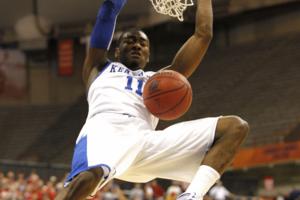
Mark Story: It is time. Why Kentucky men's basketball should retire John Wall's jersey now.
LEXINGTON, Ky. — Fifteen years after John Wall last wore Kentucky blue and white in a game, his lasting impact on the UK men’s basketball program was on display this week on the social media platform now known as “X.”
Wall announced Tuesday that he was formally retiring from professional basketball at age 34. In the aftermath of the ...Read more

How do injury-plagued Valkyries move forward with nine games left?
SAN FRANCISCO — With nine games remaining, the Valkyries have found a way to be in playoff position without consistency in their lineups.
When multiple players left for the EuroBasket tournament in June, Golden State stayed afloat. When injured All-Star Kayla Thornton was ruled out for the rest of the season last month, the Valkyries stepped ...Read more

Celtics star Jayson Tatum shares update on Achilles as 'tedious' rehab progresses
BOSTON — In his first public comments since rupturing his Achilles in May, Jayson Tatum shared a positive update on his arduous rehab process.
The Celtics superstar said in a video posted on the NBA’s official social media channels that he’s making progress in his recovery, noting he’s no longer wearing a walking boot.
“Rehab is, it�...Read more

New Timberwolves and Lynx owners lay off dozens of business-side workers
MINNEAPOLIS — Since becoming controlling owners of the Timberwolves and Lynx in late June, Marc Lore and Alex Rodriguez have been evaluating the business side of the franchises.
This week, that evaluation resulted in layoffs of what a source said were roughly 35 employees as part of Lore and Rodriguez’s restructuring of the franchises.
The...Read more

Sixers' Paul George is the last man standing from the 2010 NBA draft
PHILADELPHIA — John Wall officially announced his retirement from the NBA on Tuesday, leaving Paul George as the last man standing from the 2010 NBA draft.
George has played in 908 career games, averaging 20.6 points, 6.3 rebounds, and 3.7 assists across 15 NBA seasons with four different teams.
George of course isn’t the league’s oldest...Read more

John Wall makes retirement official, will join 'NBA on Prime' broadcasting team
In his prime, John Wall was a rocket, a supremely talented point guard whose speed, explosiveness and star power made him the first pick in the NBA draft, a five-time All-Star and a fan favorite of the Washington Wizards, the team for which he delivered nearly all his heroics and highlight reels.
At the end, Wall was in uniform and running the ...Read more
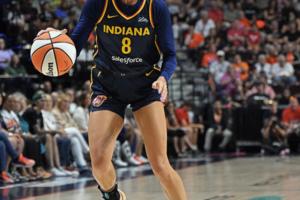
Sophie Cunningham even wants her mother to stop blaming Bria Hartley for her season-ending injury
Indiana Fever star Sophie Cunningham doesn't believe a dirty play led to her season-ending knee injury, and she wants everyone to stop accusing Connecticut Sun guard Bria Hartley of intentionally hurting her.
That includes Cunningham's own mother.
Cunningham addressed the matter on an episode of her "Show Me Something" podcast that dropped ...Read more
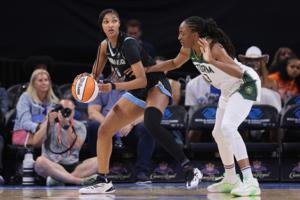
Angel Reese is back with the Sky. What does that mean for the rest of the season?
CHICAGO — Angel Reese was cleared to play for the Chicago Sky on Tuesday night against the Seattle Storm at Wintrust Arena after missing nine of the last 10 games with a lower back injury.
The forward logged 19 points in 26 minutes, slightly exceeding a 24- to 25-minute playing time restriction initially set before the game. Reese was the ...Read more

Ex-Heat employee pleads guilty in stolen memorabilia case
A former Miami Heat security officer and retired police officer accused of stealing millions in team jerseys pleaded guilty Tuesday to transporting and transferring stolen memorabilia across state lines, the U.S. Attorney’s Office announced.
Marcos Tomas Perez, 62, “stole hundreds of game-worn jerseys and other valuable memorabilia ...Read more
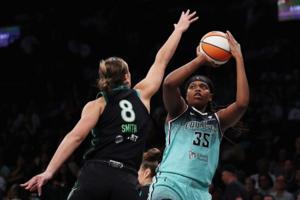
Sabrina Ionescu's dagger, Jonquel Jones' double-double help spoil Lynx's sweep of Liberty
NEW YORK — The 2025 Minnesota Lynx revenge tour was in full effect entering Barclays Center: last year’s WNBA Final runner-ups flaunted a league-best 28-5 record and remained undefeated (3-0) against defending champion Liberty.
And Tuesday night was a perfect opportunity for the Lynx to send a message that 2025 is their year. A 4-0 regular-...Read more
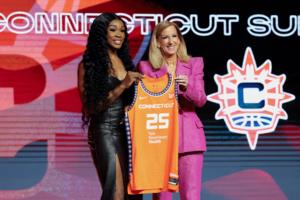
Sun sale in limbo as new report claims WNBA now wants to buy team, and for less money
HARTFORD, Conn. — The ongoing saga of the Mohegan Tribe’s attempt to sell the Connecticut Sun took another turn on Tuesday when ESPN reported that the WNBA is attempting to counter the two offers currently on the table from prospective ownership groups in Boston and Hartford.
According to the ESPN report, the WNBA opposes a move to either ...Read more

Why some Warriors' West Coast games will start late this season
SAN FRANCISCO — A change to the NBA national broadcast ecosystem will have an impact on the Warriors’ 2025-26 season.
Golden State will have three Tuesday home games – matchups against the Clippers on Oct. 28, Oklahoma City on Dec. 2 and Portland on Jan. 13 – start at 8 p.m. Pacific time
That’s an hour later than usual for local ...Read more

The secret to Sparks star Cameron Brink's success after her ACL injury? Vision boards.
LOS ANGELES — Each morning before Cameron Brink pulls on her Sparks jersey, she scans a taped-up collage in her closet. Olympic rings, a WNBA All-Star crest, snapshots with her fiancé and a scatter of Etsy trinkets crowd the board.
The canvas is a handmade constellation of who Brink is and who she longs to be. Between magazine clippings and ...Read more

Attacking the offseason more than ever, Jaylin Stewart is determined to break through for UConn men
STORRS, Conn. — Dan Hurley is determined to never have a team play defense like UConn did last season again.
By KenPom ratings, last year’s team was 75th in the nation in defensive efficiency – worst since Hurley took over the Huskies in 2018-19. This year, with a roster build similar to the 2022-23 national title team, defense will be ...Read more
Matt Calkins: Sue Bird's statue displays rightful permanence for an unrivaled star
SEATTLE — It’s a statue, and also a bookend. A bronze sculpture that encapsulates, maybe, the most accomplished athlete in Seattle history.
There are very few sure things in the realms of sports. Loaded rosters don’t necessarily predict championships. Immense talent doesn’t necessarily ensure victory. But there was an inevitability ...Read more

Sun's dim playoff chances doomed after epic collapse to Fever
UNCASVILLE, Conn. — The Connecticut Sun entered the fourth quarter against the Indiana Fever on Sunday with victory in their grasp. They had led by as many as 21 points in the third, and a buzzer-beater 3-pointer from rookie Leila Lacan sent them into the final period still ahead by double-digits.
But as they have so many times this season, ...Read more
Storm unveil Sue Bird statue, first for WNBA player
SEATTLE — A pair of point guards, Lenny and Sue, now guard the entrance of Climate Pledge Arena.
A statue honoring WNBA legend and soon-to-be Hall of Famer Sue Bird was unveiled on Sunday. Her 8-foot, 650-pound statue took its place next to the likeness of former Supersonics player-coach Lenny Wilkens, added to the arena grounds in June.
Her...Read more

Mike Bianchi: On opening night, Magic and Heat need to resurrect the hate!
ORLANDO, Fla. — The NBA dropped its schedule earlier this week, and buried in the long list of 1,230 regular-season games was a juicy nugget that should make every Orlando Magic fan sit up and start sharpening their social media barbs:
The Magic will open the 2025-26 NBA season against the Miami Heat.
Yes, you read that correctly.
The ...Read more
Popular Stories
- Mark Story: It is time. Why Kentucky men's basketball should retire John Wall's jersey now.
- Celtics star Jaylen Brown's father arrested on attempted murder charge in Las Vegas: reports
- Kelsey Plum sinks buzzer-beater as Sparks win despite Paige Bueckers' historic night
- New Timberwolves and Lynx owners lay off dozens of business-side workers
- Celtics star Jayson Tatum shares update on Achilles as 'tedious' rehab progresses





